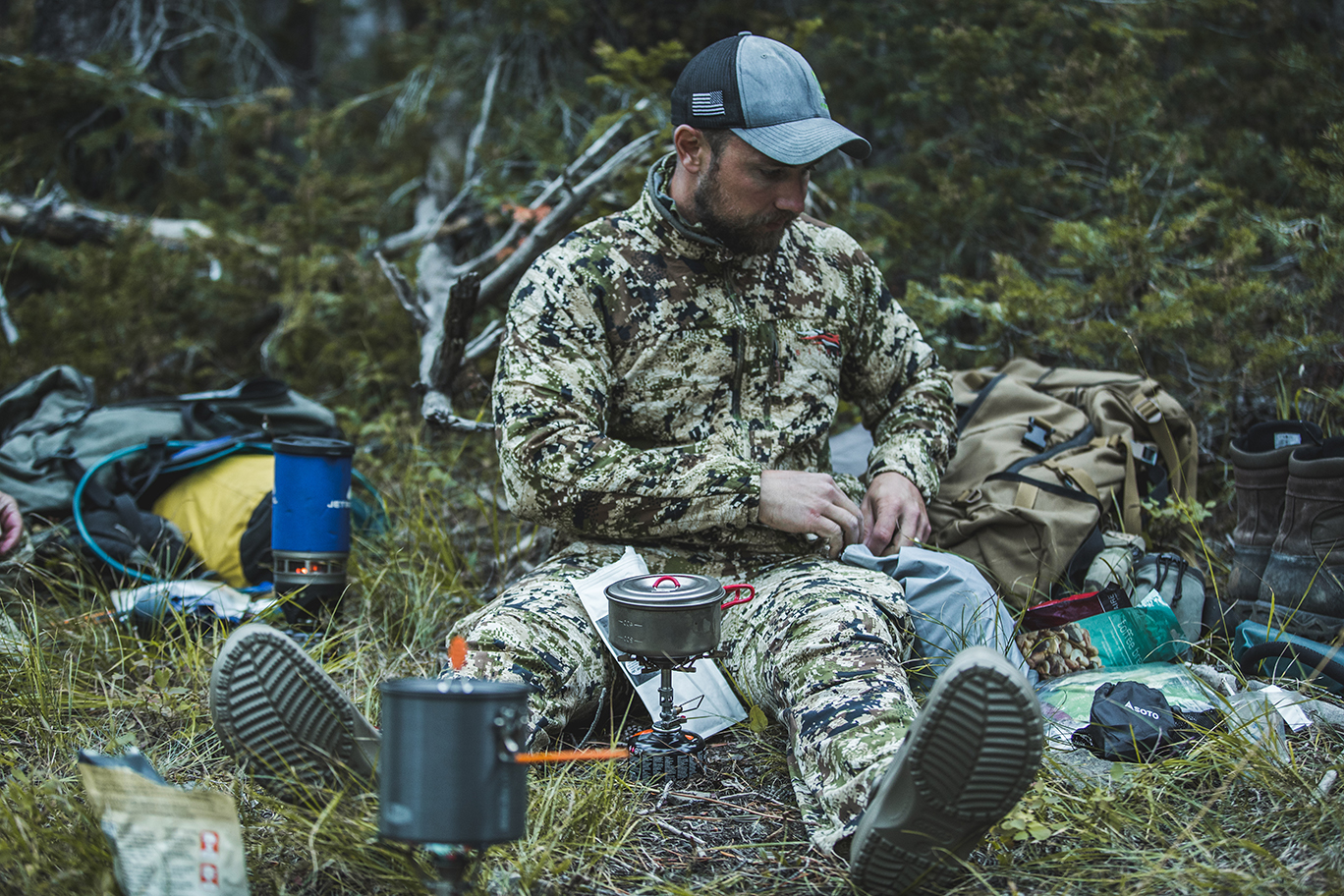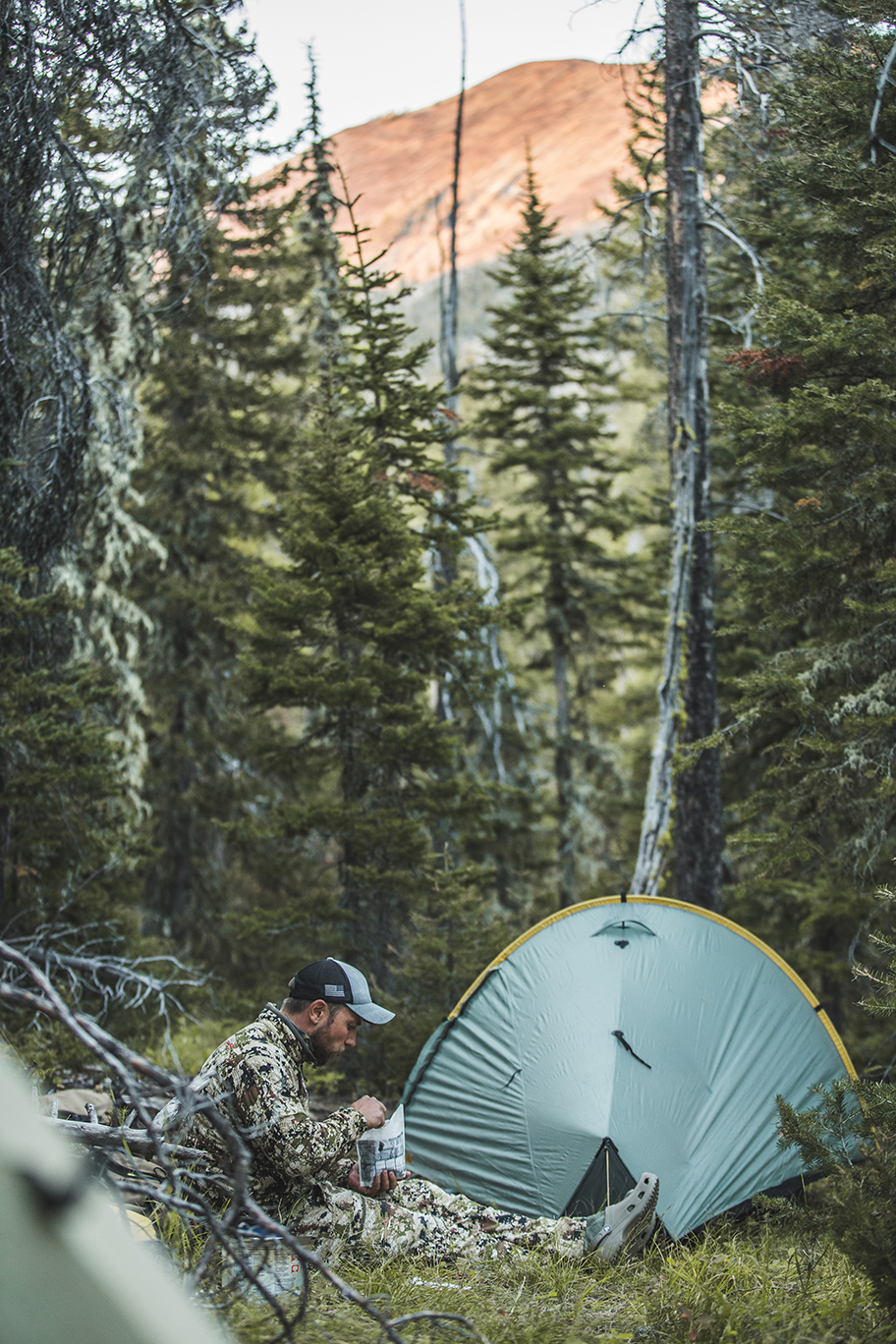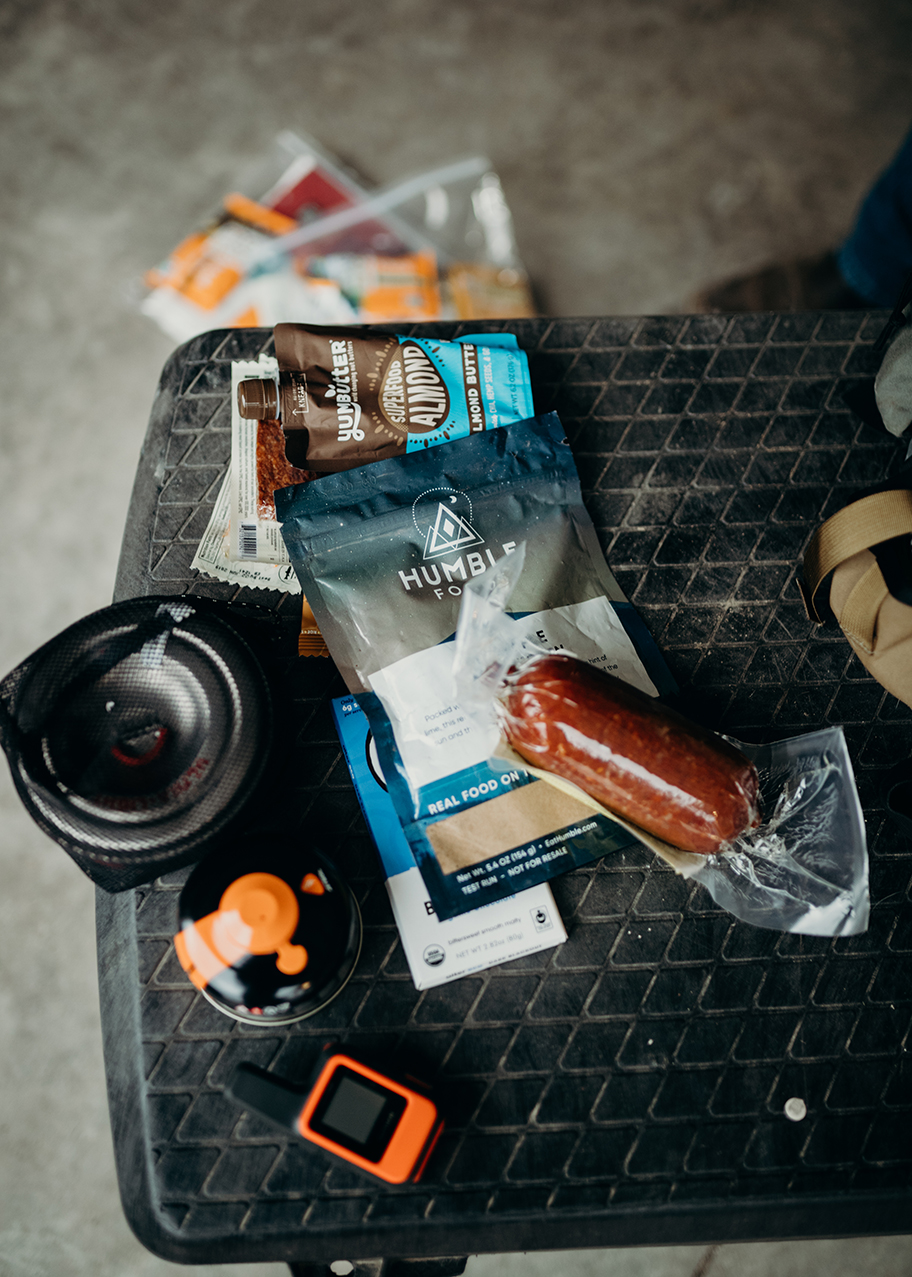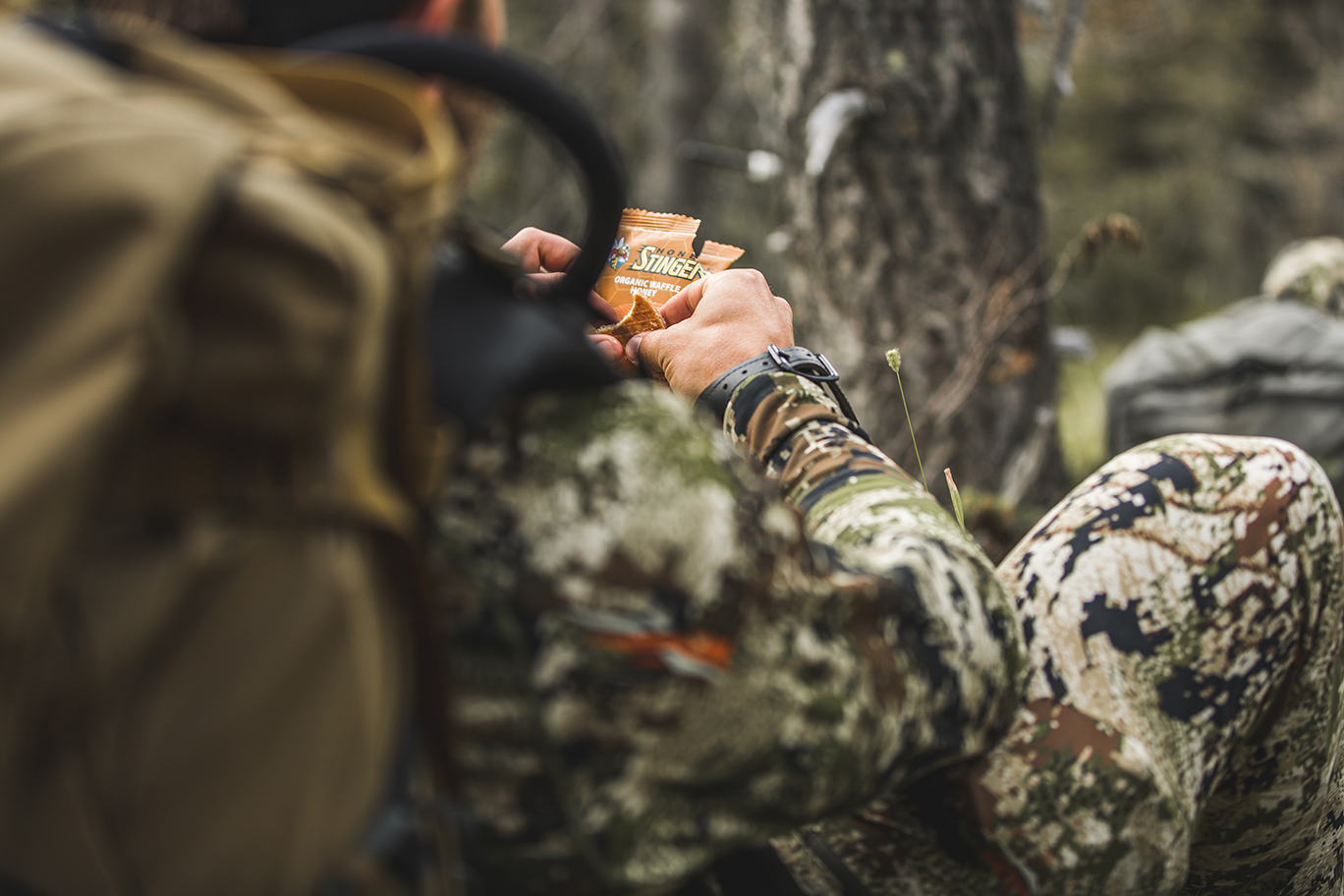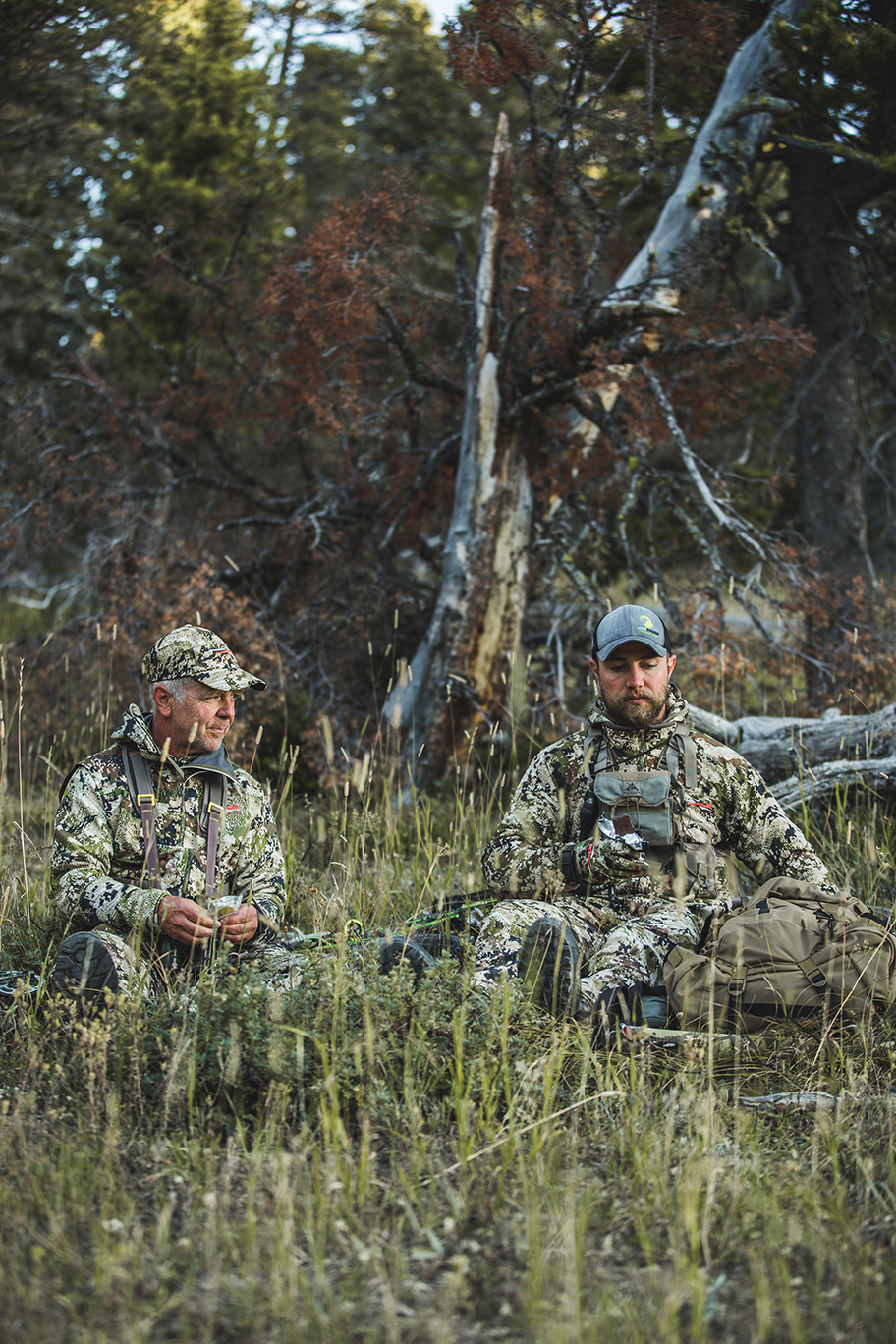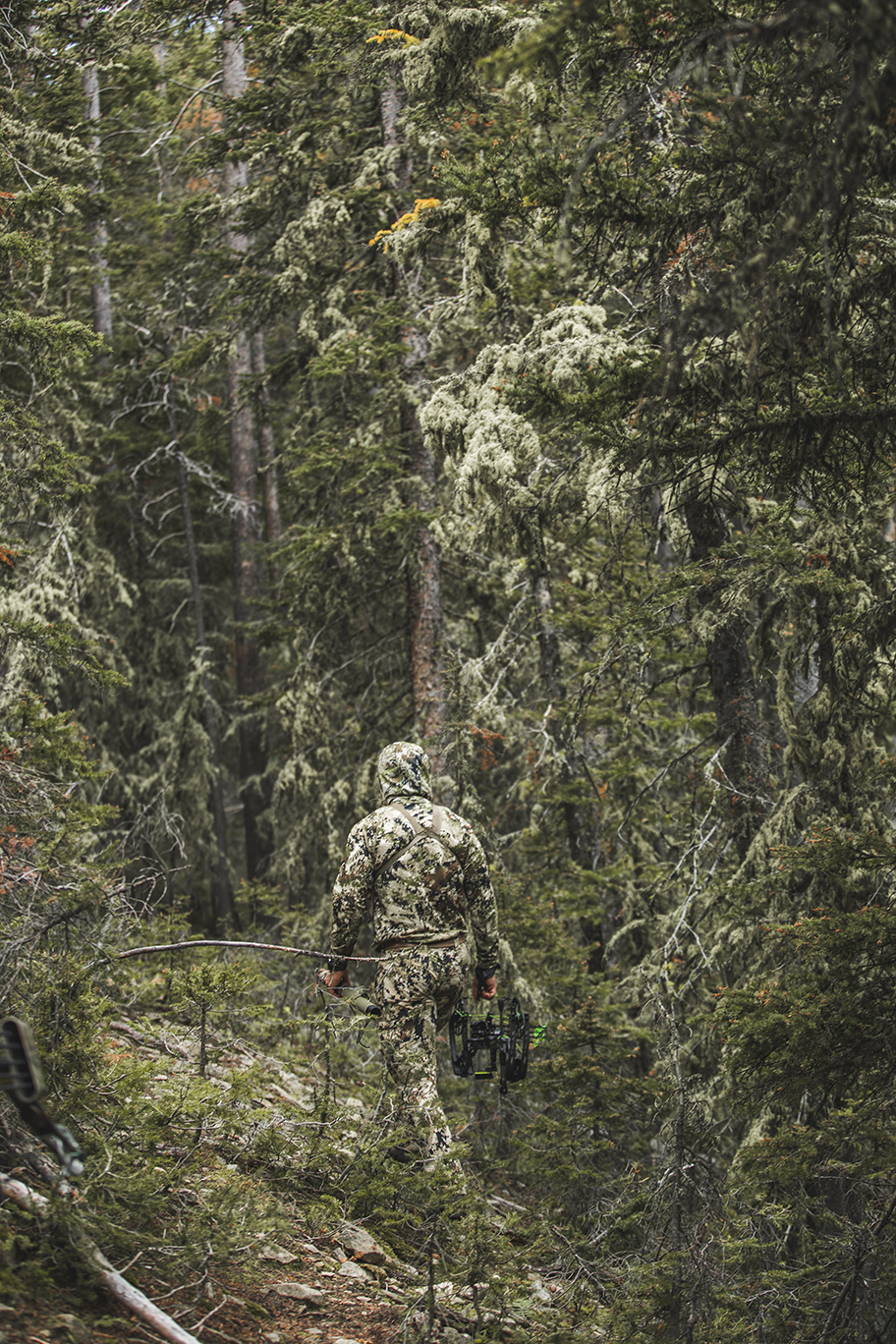In this article, Dustin Diefenderfer, founder of MTNTOUGH Fitness Lab, covers the science behind why backcountry hunters often struggle in the mountains. While most people assume that performance boils down to a combination of fitness and grit, there is more to this equation. If you’re not accounting for “caloric burn rate”, you’re not maximizing your potential or your chances of success.
What is MTNTOUGH?
MTNTOUGH Fitness Lab located in Bozeman, MT, has established itself as the elite source for improving mental toughness, physical preparation, and performance research for the backcountry hunter.
They have assembled an impressive team for this task, including Alex Fichtler (Former US Navy SEAL), Ara Megerdichian (US Army Ranger, Lieutenant Colonel and former West Point Instructor), and Jimmy Alsobrook (Mountain Training Legend & National Academy of Sports Medicine Certified Personal Trainer).
Lifelong backcountry hunter and MTNTOUGH’s founder, Dustin Diefenderfer, explains, “ We strive to find out what makes the excellent tick, and what gives them the indomitable, never quit, next ridgeline mentality and strength. We study it, measure it, test it, unpack it and then teach it to others.”
R & D
MTNTOUGH is continuously researching backcountry performance in “The Lab”, their Bozeman location where on any given day you will see some of the worlds most committed backcountry hunters strolling in for a workout alongside elk hunting guides, SEALS, Bozeman locals, city cops and firefighters.
“Research and development has always been at our core, we are always looking for new ways to enhance performance & grit in the high country, and we learn from many different demographics, but always test things first on ourselves”, Dustin Diefenderfer explains.
The “Bonk”
Enter Dustin…
This past spring we kicked off a new research project that endeavored to answer a critical question for the backcountry hunter.
Why do many physically & mentally prepared hunters unexpectedly crash on multi-day, intense, backcountry trips under heavy load?
The crash would come on slowly at first with some fatigue, loss of strength, and brain fog…but at some point during the hunt, they would always hit a wall. That moment when their mind and body would completely shut down.
Something was missing, these hunters were in phenomenal shape…it wasn’t a physical problem, or mental, they were simply running out of fuel.
It’s hard to explain to someone if they’ve never experienced it. One minute you are doing ok and the next, you are convinced you might not make it out.
Endurance athletes have a name for it… it’s called “Bonking.” As soon as you bonk, you lose your mental capacity tenfold and the hunt might as well be over.
Your energy is gone. You can’t think straight. And fear sets in.
For those that have experienced it, they usually describe it as “my body just shut down.” So, what’s going on here?
We launched an in-depth study on “bonking” as it relates to caloric needs, caloric burn, caloric deficits, and its impacts on backcountry performance. Over this past year we’ve been tracking mountain athletes’ caloric burn rates at high elevation, over rugged terrain, and on extended trips with both light packs and heavy packs.
Being properly fueled in the backcountry can be complex and clearly each individual responds differently based on their unique physiology. But we did discover some general findings that can change the game for many backcountry hunters…
Here’s What We Found
Most hunters, even experienced backcountry hunters, aren’t aware of how many calories they burn in the backcountry. Many pack breakfast, lunch, dinner and lots of snacks with no understanding of their daily, hourly or total caloric needs.
The Bottom Line?
They weren’t eating enough.
They were burning far more calories than they were taking in, and over a 3, 5, or 7-day period, they were crashing. Their “caloric burn rate” was out of balance.
On the other hand, we found that hunters with the best on-mountain performance (strength, stamina, mental clarity), consumed more volume, ate more frequently each day, and selected foods that packed more punch, than other hunters. They understood how many calories they were burning given the conditions of the trip and followed a plan to ensure they were staying fueled daily.
Each trip is unique and an early season hunt with warm temperatures and less gear requires far less fuel than a late season endeavor. But, hunters were packing the same amount of calories regardless of trip type, leading to a significant caloric deficit under longer days & harsher conditions.
The combination of elevation, cold temperatures, rugged terrain, and heavy backpacks all combine to burn more calories than you’re used to.
Additionally, altitude will suppress your appetite, and when you are focused on hunting any people simply forget to eat the food they bring.
The key to preparing for your hunt so you can avoid “The Bonk” boils down to planning for your caloric burn rate…and managing it throughout your hunt.
What This Looks Like On a 7-Day Backcountry Trip
Here is an example of what this starts to look like on a 8-day Montana DIY backcountry elk hunt. Far from the truck, with no food drop, the fuel for your 8-day trip is on your back as you cover 5-8 miles per day. So, planning for your caloric burn rate is critical.
Let’s look at John, a 33 year old backcountry hunter that weighs 180 pounds. Based on his body type, he typically burns around 2,500 calories during a normal day.
On Day 1 of his hunt, John hikes for 6 miles carrying a 50 pound pack. He’ll burn close to 5,000 calories that day, almost 2X what his body is used to.
Let’s say he harvests an elk on day 5 and hikes out with the rear quarter and back straps. John will burn close to 5,500 calories that day, and will need to go back in for a second trip of meat the next day. As you can see his caloric burn rate is significant on a trip like this and he needs to watch it closely to avoid “bonking”.
This is how many calories he’s going to burn during that time:
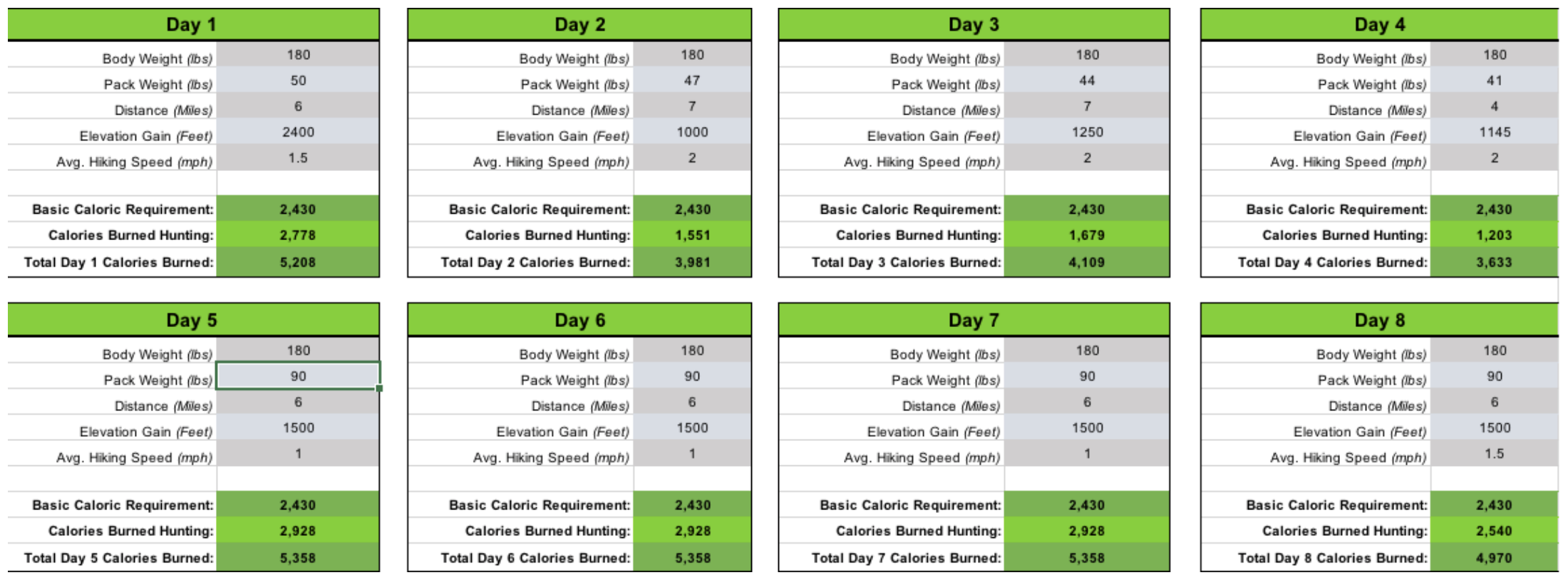
What you’ll notice is that John is burning far more calories than his body is used too. He will burn nearly 40,000 calories in this hypothetical 8-day trip.
Look more closely at day 5. That’s when he’s started to really crank up the demands on his body with his heavy pack. His risk of “bonking” is through the roof at that point, and it all depends on what he’s been doing to manage his caloric burn rate leading up to that point.
During our initial research, we tracked several 200 pound male mountain athletes and found they burned upwards of 6,000 calories during 12-hour, high elevation, heavy-pack shed hunting trips this spring.
But Here’s the Problem
Many of these individuals only packed and consumed 2,000 calories, leaving them with a 4,000 calorie deficit.
When your body burns more calories than it consumes during heavy exertion, especially during a multi-day event like hunting, it creates the conditions for a severe energy crash.
On-mountain performance (strength, stamina, and mental clarity) will gradually decrease as a hunter’s calorie deficit increases day after day. Basically, you’re trying to manage the calorie gap, between your daily burn and daily consumption, especially over multi-day expeditions.
As you can see, being properly fueled in the backcountry can take some planning. Especially when you consider the impacts of altitude, the weight, mass and cost of calorie dense foods, and simply forgetting to eat because you’re too focused on the stalk.
3 Tips to Manage Your Caloric Burn Rate for Extended Backcountry Hunts
If you want to have better performance during your hunts, and avoid crashing in the mountains, follow these three steps to build your backcountry nutrition plan.
The idea of a having backcountry nutrition plan is simply to calculate how many calories you will burn per day versus how many calories you are packing per day on a given trip, and then manage it the best you can, given the restraints of backcountry hunting.
The plan doesn’t need to be complicated, it can actually be rather simple. Building your backcountry nutrition plan can be done in these three steps:
Tip 1: Estimate Your Caloric Burn Rate For Your Hunt
This first step is an eye opener for many backcountry hunters as they often aren’t aware of the significant number of calories they burn per day in the field.
That’s why we created The MTNTOUGH Backcountry Calorie Calculator to help you with this step using a calculation based on bodyweight, pack weight, distance, elevation gain and average hiking speed.
To calculate this number, we utilize what’s known as the “ACSM” or “Pandolf” equations, which were initially developed for the military and has been used since the 1970s to estimate how much energy it takes to hike with a heavy pack on.
Remember: not all hunts are equal.
High country mule deer hunts above tree line will likely require more calories than a lower elevation antelope hunt down in the plains. The important part is understanding what each hunt will require from your body.
Once you’ve calculated how many calories you’ll be burning each day during your hunt, you’ll need to plan your meals to support them.
A big mistake many hunters make is to pack their meals without planning them. In other words, just throwing a bunch of food in our packs and calling it good…
Your food needs to be planned to accomplish specific calorie goals!
If your hunts are anything like ours, you’re likely still going to be operating at a calorie deficit. That’s ok, the most important thing to remember is to optimize your performance and not let the calorie deficit get too far ahead of you day-after-day.
For most people reading this, that will mean packing more food, so you eat more calories than you would during a normal day at home, and eating every 1-2 hours.
The MTNTOUGH Backcountry Calorie Calculator will help with this step and has a tab to plan your daily meals based on your burn rate, and allows you to manage your caloric deficit.
Here’s an example of John’s meal planning for his 7-day backcountry hunt:
As you can see in John’s plan, he is packing for and consuming about 4,000 calories per day, until he starts packing out his bull, then he bumps up his consumption to 4,550 to manage his caloric deficit.
Packing and consuming over 5,000 calories per day is typically unrealistic in the high country. Most individuals can’t consume that much food anyway, and if they could, most don’t want to pack that much weight.
Certainly hunters can get by on much less than their daily caloric burn for short periods, but it really boils down to a matter of performance over an extended period of time.
The most important thing is to manage your caloric burn rate so it doesn’t get out of control as your hunt progresses.
As long as John keeps it reasonable, he should be ok to manage his energy levels and on-mountain performance throughout this trip.
Make sure you’ve added up your meals and snacks to hit your goal each day to lessen the impact of the miles on your body.
Step 2: Eat Foods That Pack More Punch
Many people stop at the gas station and grab whatever food they can find before a hunt.
If you’re reading this, you’re probably not one of those people. You probably plan your food and calculate weight and mass into the equation.
With this new “caloric burn rate” idea, it’s important that you choose foods that pack more of a punch to keep your burn rate lower.
The old backpackers adage of “take foods that have 150 calories or more per ounce” is something you’ve likely heard before.
The only problem with that rule, is that sometimes those types of foods are actually unhealthy and won’t help your body stay fueled in the backcountry.
Here are two foods that you can add to your pack this fall that pack a strong punch:
- Coconut Oil – These can be found in small 1oz packages and usually deliver around 212 calories per that one ounce. Virgin coconut oil will give you more of that coconut flavor, but if you’re not a big fan of the taste, get “refined” coconut oil, which has most of the flavor removed. Packing high fat foods, such as coconut oil has been a difference maker for us. Fat has the highest calorie per gram ratio, is an awesome long term energy source, aids in keeping your body warm and promotes better sleep.
- Dark Chocolate – Getting a more pure dark chocolate, like something in the 72% range, will usually deliver around 164 calories, and it tastes great. Our favorite aspect of dark chocolate is, depending on the source, it is packed with natural stimulants, keeping your brain focused and alert. An excellent quick energy source that you can keep handy and snack on throughout the day.
Consider adding these two foods to your daily rations when you plan your next hunt.
Tip 3: Eat All Day
The key is to continuously fuel your body throughout the day to reach your daily calorie goals. But, you need a plan to make sure this actually happens in the field.
Elevation and fatigue will work together to suppress your appetite, adding to your risk of bonking so, break your food out into daily rations and make sure you are consuming all the calories every day.
Ensure that the snacks you need to meet your calorie goals are easily accessible so you can eat throughout the day without stopping.
Make sure you’re getting fuel every 1-2 hours to maintain performance. To make this as easy as possible, eat while you move and while you sit.
If you’ve packed right, you’ll always have snacks and things to chew on handy so when you’re sitting in a stand or moving up a trail you can be eating small items by hand.
Continuously fuel your body throughout the course of each day. Trying to jam in 2,000 – 3,000 calories by the fire at night is just going to make you bloated and weak – you need to spread your calories out over the day.
If you’ve planned it right, packed it right, and carried it right – you’ll have food with you all the time and you’ll notice your backcountry performance will be improved.
Avoid the Bonk When You Plan Your Next Hunt
Many times, the difference between a successful hunt and going home early comes down to how your body performs.
The demands of the backcountry can sneak up on the best of us and increasing your backcountry performance can set you up for more success.
When you’re short on time, you’re just going to gravitate to what you’ve done before to prep for hunting season.
But what’s familiar isn’t always the best…
Bonking can happen to anyone, but the guys who properly prepare their nutrition plan for the backcountry have a much lower risk. Just grabbing whatever food is handy and throwing it in your pack could be a huge mistake…and one that can put you at risk in the mountains.
Start building your backcountry nutrition plan to have more energy, more endurance, and more success this hunting season. And as temperatures drop, this concept of your “caloric burn rate” becomes even more important, so it’s not too late to make changes.
If you’d like more help planning your next hunt, download the MTNTOUGH Backcountry Calorie Calculator to estimate your caloric burn, plan your meals, and prepare your gear for whatever the mountain throws at you.
You may be fit enough, and you may have the grit to push through anything in your path, but if you don’t eat properly, you’re leaving performance on the table that could make the difference between a full freezer and a cold bowl of tag soup.



